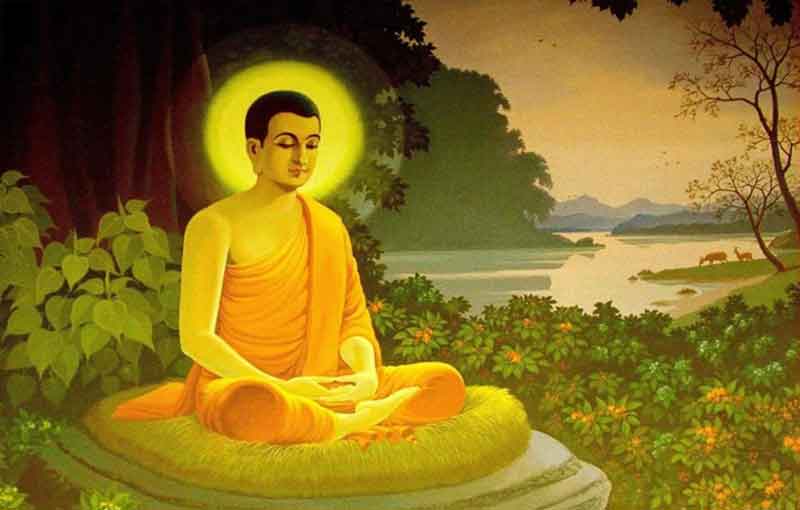Under a spreading Banyan tree near the Indian city of Benares, there sat a holy man. His clothes were plain and simple, and a look of supreme peace was in his eyes. On the grass around him sat hundreds of his disciples and followers. The holy man spoke softly as he told the people of the sufferings of the world. He spoke of the causes of misery and the path humans should follow to release themselves from their suffering. Gently he told the crowd how they should lead their lives in order to reach enlightenment. The people sighed, caught up in a spell of his words. The holy man was the Buddha. His teachings were to change the whole history of Tibet.
Lord Buddha was born in 563 BC in the kingdom of the Sakyas, on the border of Nepal and India. His name was Prince Siddhartha, and he was the royal son of King Suddhodana. At his birth, it was prophesied that he would either become a king of kings, or a very holy man who would renounce the world. Siddhartha’s father was determined that his son should become a mighty ruler rather than a saint. He sheltered him from the sight of all suffering and unhappiness, and provided him with all the pleasures of life. In this way, the king hoped that the idea of renouncing the world would never enter Siddhartha’s mind.
Yet the young prince was not content. Always, he was searching for some truth that he could never find in the endless round of pleasures at the royal court. He married Yasodhara, a beautiful princess, who bore him a son. But still he was not happy. Then, one day while out driving with his charioteer, Siddhartha saw four sights that were to change his life: an old man bent with age limped across his path, a man torn by pain and sickness lay by the side of the road, as they drove through a forest a corpse was carried out of a filthy hovel, and, finally, the prince saw a wandering holy man who had renounced the world and seemed to be at peace.
Siddhartha was greatly affected by these four sights, and he asked his charioteer what they meant. Only then did he learn the true nature of pain, old age, and death. Deeply touched by the misery of human existence, Siddhartha decided to leave home in search of a solution to the problem of suffering. Taking leave of his wife and child while they slept, Siddhartha rode far into the forest. There, he sent his horse and fine clothes back to the palace, and cut his hair so that he no longer resembled a prince. Siddhartha now began a six-year period of study, fasting, and self-denial. The young man’s earnestness in his search for the truth inspired five disciples to join him. But Siddhartha was too strict with himself. Continual fasting brought him near death. One day, a young girl offered him a bowl of rice, as he lay sick and starving beneath a great Banyan tree. Siddhartha realized that he would never achieve enlightenment by deprivation alone, so he accepted the food. His disciples were disappointed at his weakness and left him. When he had recovered his strength, Siddhartha sat himself beneath a great tree, determined never to rise until he saw the truth. All night he battled with Mara, the evil one, who was sent to distract him from his purpose. But the young man resisted all temptations. As the night wore on, he achieved various stages on the path to enlightenment. And then, as dawn broke, he realized the final truth. He became the Buddha- the Fully Awakened One. Today, you can still see the ‘Bodhi Tree’ in Bodhgaya where the Buddha reached enlightenment.
For seven weeks, the Buddha contemplated his new wisdom, and wondered whether mankind was ready to receive his teachings. Out of compassion, he decided to spread his message to the world. His five disciples were the first to join him, and it was to them that he delivered his first sermon- the Turning of the Wheel of Dharma- in the Deer Park of Saranath. Then, for more than forty years, he traveled through India preaching the Buddhist doctrines.
Over a thousand years later, his teachings reached Tibet.

